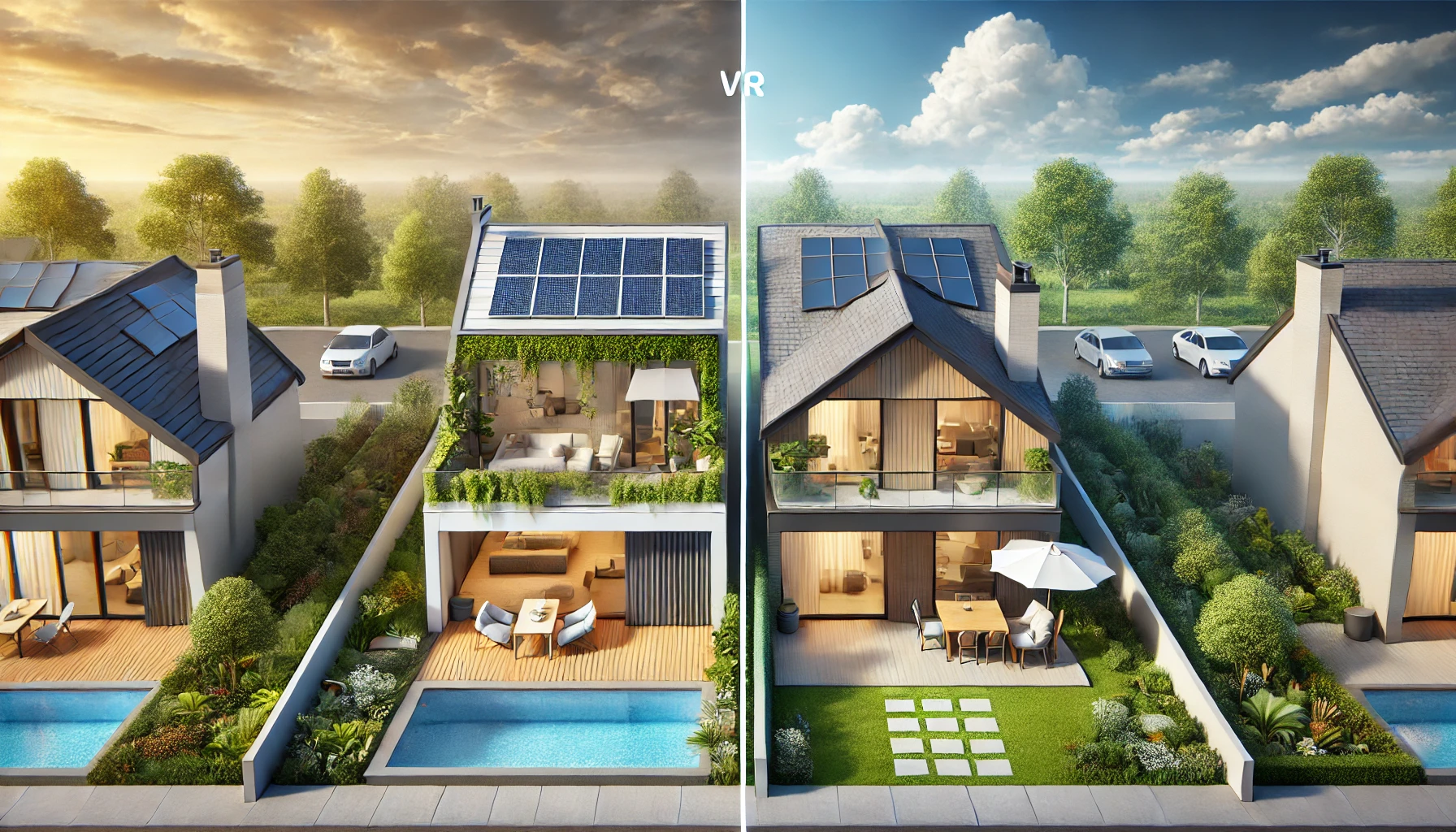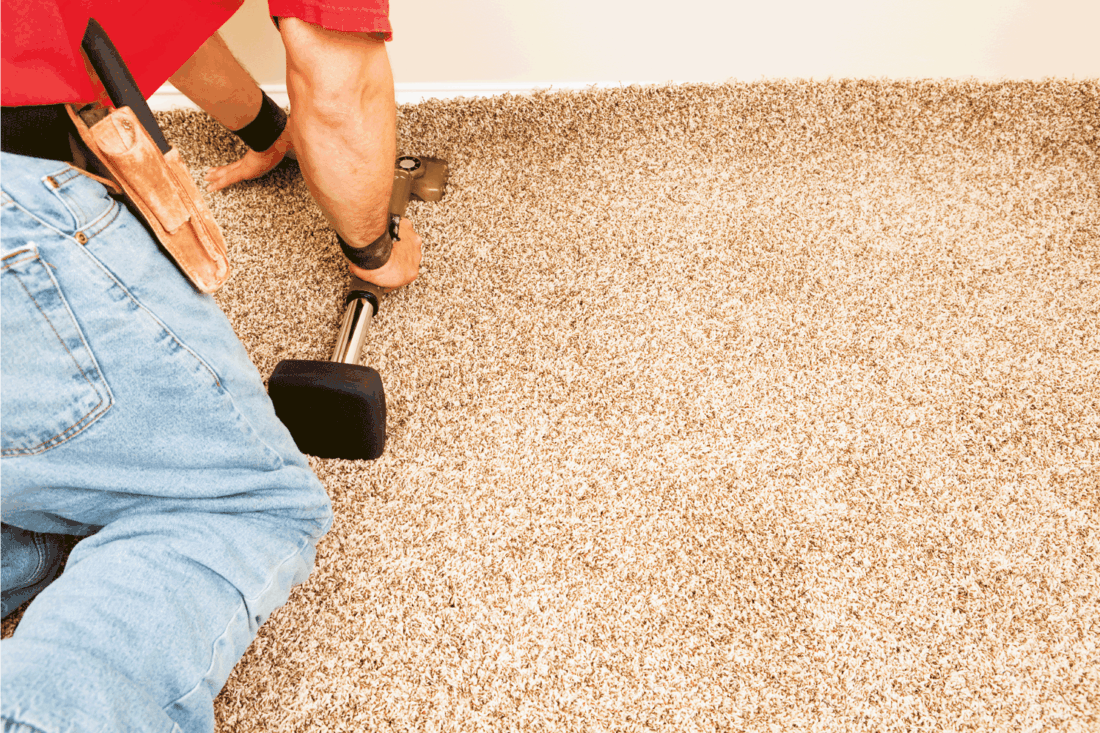Introduction
Choosing the right roof for your home is a crucial decision that impacts everything from energy efficiency to aesthetic appeal. As we approach 2025, changing climate conditions, advancements in roofing technology, and evolving architectural trends make this choice even more significant.
Flat and pitched roofs each offer distinct advantages and drawbacks, and the best choice depends on your needs, budget, and environment. This guide explores the features of both roof types to help you make an informed decision.
Understanding Flat Roofs
Flat roofs, characterized by their minimal slope, are popular in modern architectural designs. Their slight incline (1–10 degrees) allows for water drainage, though maintenance is critical to ensure effectiveness.
Materials Commonly Used
- EPDM rubber membrane.
- PVC roofing.
- Modified bitumen.
Advantages of Flat Roofs
- Cost-Effective Installation: Flat roofs are simpler and cheaper to install due to fewer materials and labor requirements.
- Modern Design: Ideal for contemporary homes, they provide a minimalist and sleek aesthetic.
- Functional Space: Flat roofs can double as outdoor living areas, hosting rooftop gardens or solar panels.
Disadvantages of Flat Roofs
Water Accumulation:
Without proper drainage, water pooling can lead to leaks and structural damage.
- Limited Durability: Flat roofs may not hold up well in extreme weather, requiring regular maintenance in harsher climates.
Flat roofs are an excellent choice for those seeking cost efficiency and added functionality, particularly in mild or urban environments.
Understanding Pitched Roofs
Pitched roofs, with their distinctive sloped design, are a classic choice for homes. Their steep incline promotes efficient water and snow runoff, making them ideal for regions with heavy precipitation.
Common Styles and Materials
Styles: Gable, hip, mansard, or gambrel roofs.
- Materials: Asphalt shingles, clay tiles, slate, or metal.
Advantages of Pitched Roofs
- Exceptional Drainage: The slope naturally sheds water and snow, reducing the risk of leaks.
- Long-Term Durability: Pitched roofs are highly resilient in harsh weather conditions, especially when built with modern materials.
- Timeless Appeal: They enhance the traditional charm of homes, increasing curb appeal and property value.
Disadvantages of Pitched Roofs
- Higher Initial Costs: Installation requires more materials and skilled labor, increasing upfront expenses.
- Limited External Usability: Unlike flat roofs, the steep design limits outdoor functionality.
Pitched roofs are ideal for homeowners prioritizing durability and aesthetics, particularly in areas with frequent storms or snow.
Energy Efficiency in 2025
Energy efficiency is a priority for homeowners, and both roof types have their advantages:
- Flat Roofs: Easier to insulate and often paired with reflective coatings to reduce heat absorption.
- Pitched Roofs: Their natural ventilation design reduces heating and cooling costs, especially in attics.
Your climate and energy goals will determine which roof type best meets your needs in 2025.
Cost Comparison
Understanding the financial implications of your roofing choice is critical:
- Flat Roofs: Installation costs range from $5 to $15 per square foot, making them more affordable upfront. Maintenance costs can add up over time due to potential issues like ponding water.
- Pitched Roofs: Installation costs are higher, ranging from $10 to $20 per square foot, but their durability often results in lower long-term maintenance expenses.
If upfront costs are a concern, flat roofs are a practical option. For long-term value, pitched roofs are the better investment.
Weather Resistance and Durability
Weather resistance is a critical factor when choosing the right roof for your home, especially in states like Florida, where severe weather is common.
- Flat Roofs: Perform well in mild climates but may struggle in areas with heavy rain or hurricanes due to water pooling. Regular inspections and repairs are essential to prevent leaks and structural damage. If you live in Florida, consider hiring professional roof maintenance services Florida to ensure your flat roof can withstand extreme weather.
- Pitched Roofs: Their sloped design makes them highly effective at shedding water and snow, reducing the risk of damage. They are particularly reliable in areas prone to hurricanes and heavy storms, offering peace of mind during severe weather.
For Florida homeowners, investing in regular maintenance services for either roof type is essential to ensure durability and long-term performance in the face of frequent storms.
Aesthetic Appeal and Home Value
The appearance of your roof impacts your home’s curb appeal and resale value:
- Flat Roofs: Complement modern designs, offering a sleek, minimalist look that appeals to urban dwellers.
- Pitched Roofs: Provide classic and versatile charm, suiting traditional and suburban homes.
While flat roofs suit modern architecture, pitched roofs often have broader appeal, making them a better choice for resale value.
Usability and Functionality
How you use your roof can also influence your decision:
- Flat Roofs: Offer usable space for rooftop gardens, patios, or solar panels, maximizing functionality.
- Pitched Roofs: Provide additional attic space for storage or living areas but lack external usability.
If outdoor living space is a priority, a flat roof is the clear winner.
Climate and Regional Suitability
Your location plays a significant role in determining the best roof type:
- Flat Roofs: Ideal for mild or dry climates where heavy precipitation is rare.
- Pitched Roofs: Better suited to regions with heavy snow, rain, or high winds.
As weather patterns shift, consider how your region’s climate will evolve in the coming years.
Sustainability in 2025
Eco-conscious homeowners will find sustainable options for both roof types:
- Flat Roofs: Compatible with green roofing systems and solar panels, flat roofs excel in sustainability.
- Pitched Roofs: Support solar panels effectively but rely on proper orientation for maximum efficiency.
Both options can contribute to a greener future, with flat roofs offering more innovative possibilities.
Conclusion
Choosing between a flat roof and a pitched roof in 2025 ultimately depends on your priorities: budget, aesthetics, functionality, and climate. Flat roofs offer affordability and modern appeal, while pitched roofs provide durability and timeless charm.
Evaluate your long-term goals and consult a roofing professional to make the best choice for your home. With proper planning and maintenance, either roof type can protect your home and enhance its value for years to come.
Also Read
- ► Preparing Your Home’s Roof and Gutters for Severe Weather in 2025
- ► Weapon Manufacturers in India: Driving Innovation in Defense
- ► Mobile Coffee Bar: A Unique Experience for Any Event
- ► Best Indian Food Chicago: A Culinary Journey through Flavorful Delights
- ► Home Temples: Elevating Spiritual Spaces in Modern Homes
- ► Yeezy Gap hoodie Sizing Guide How to Find Your Perfect Fit
- ► Veneer Doors Manufacturer: Crafting Elegance and Durability
- ► Exploring the Iconic Hellstar Hoodie || Black Hellstar Hoodie
- ► Classic Eric Emanuel Shorts for Any Occasion
- ► Dining Room Furniture: Creating Elegant and Functional Spaces
- ► Integrating Ayurveda with Conventional Cancer Treatment for Immunity Boost
- ► Understanding 503 Service Unavailable: What It Means
- ► Bedroom Furniture: Transforming Spaces into Relaxing Retreats
- ► Manali Couple Tour: Essential tips for a perfect vacation
- ► Understanding DSPM: What Does DSPM Mean?





